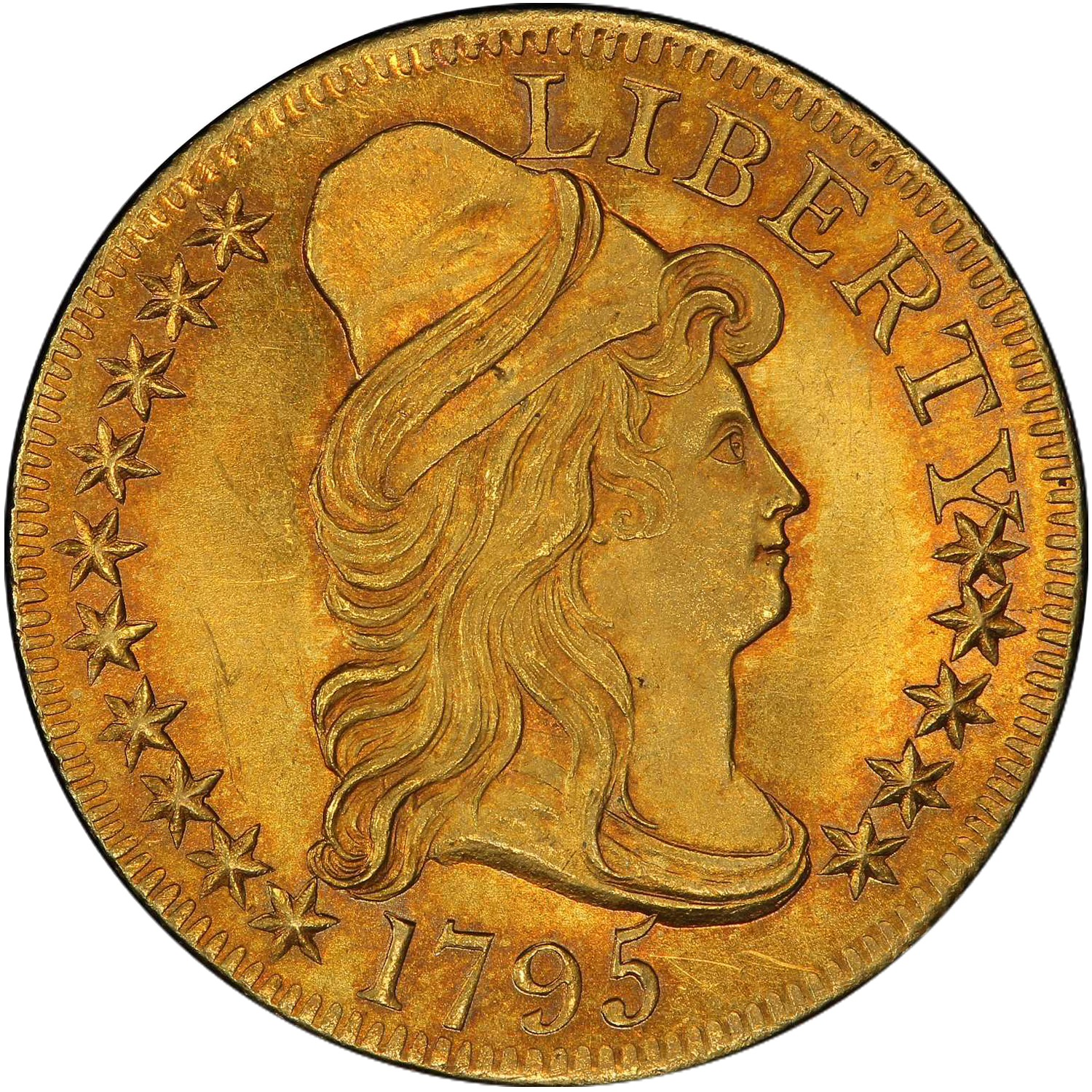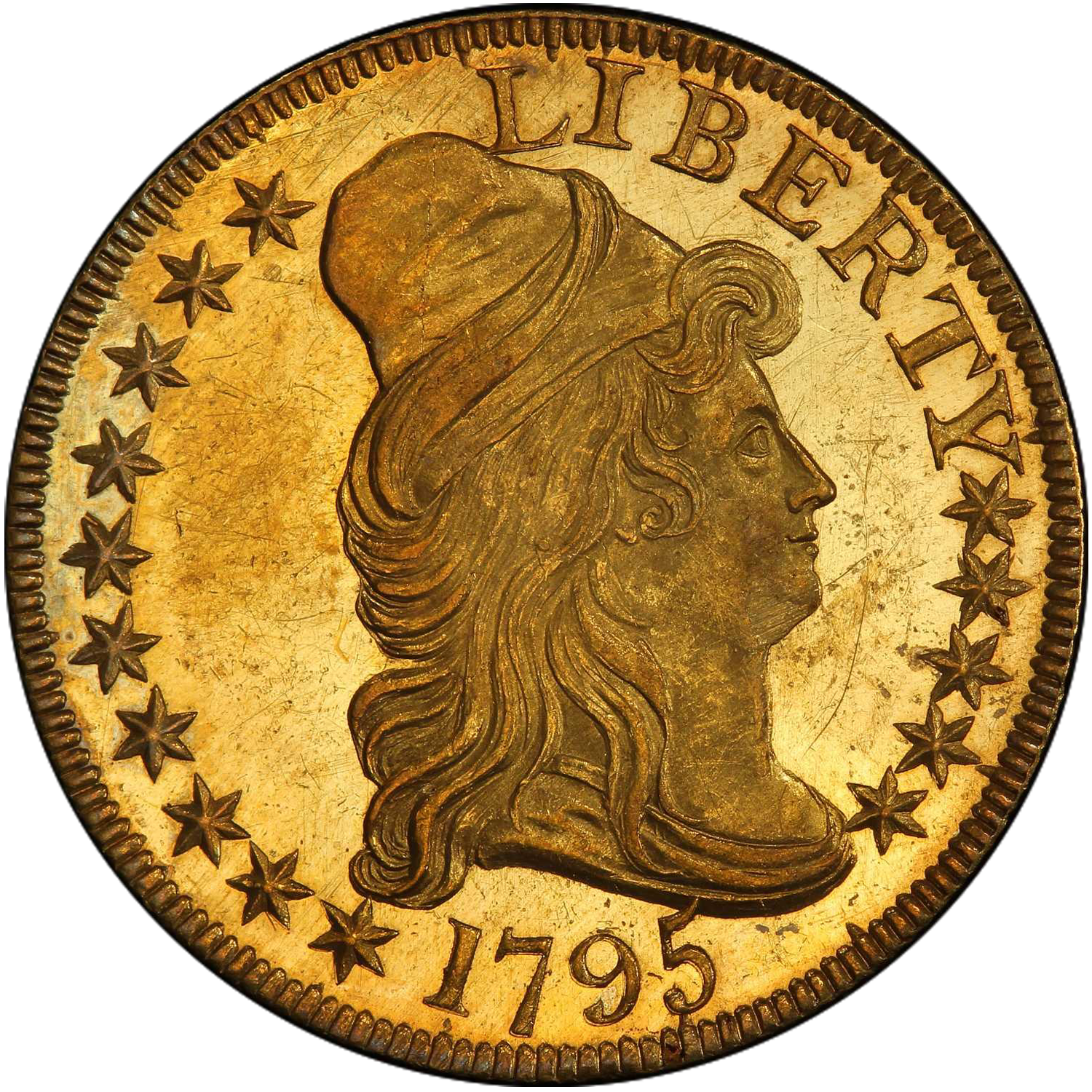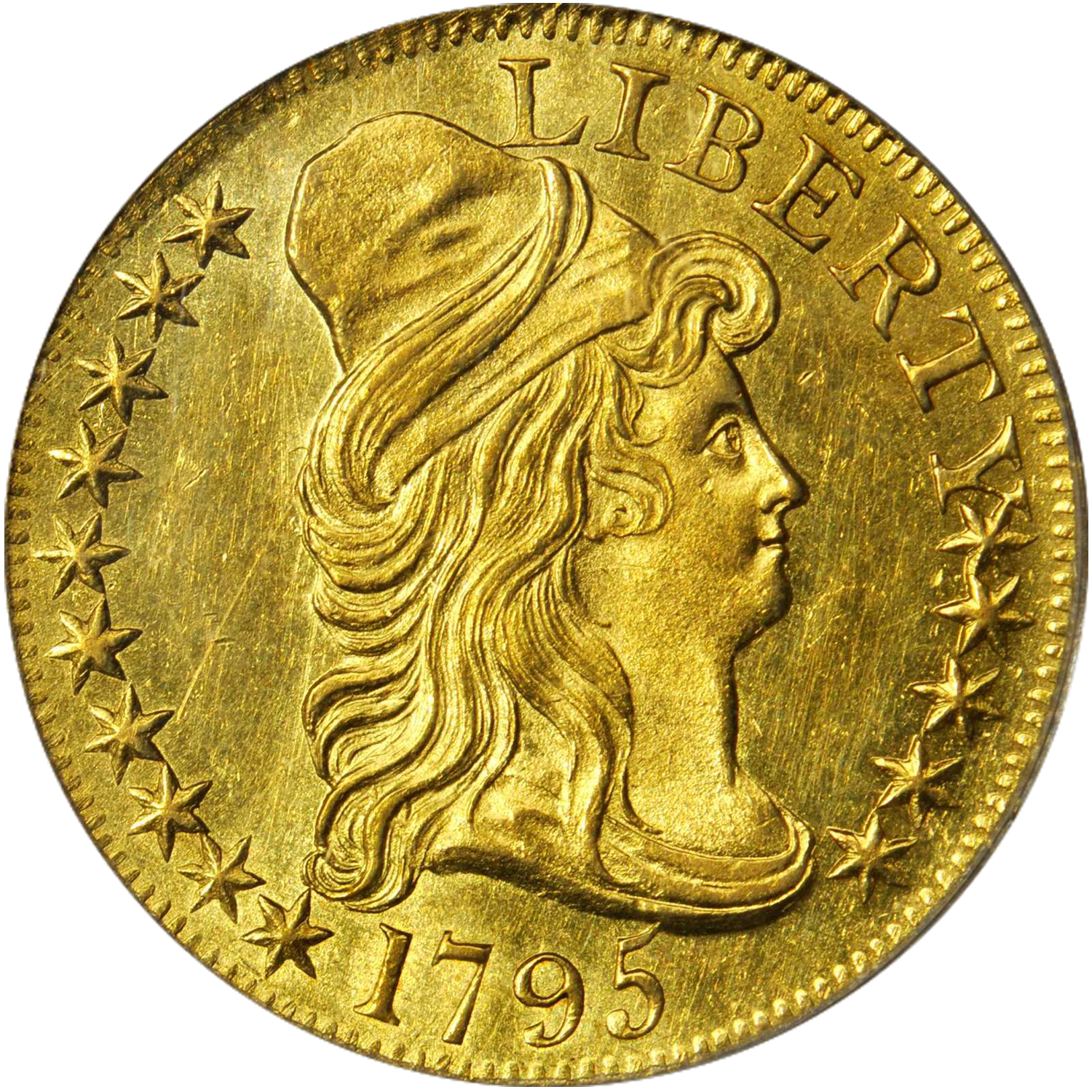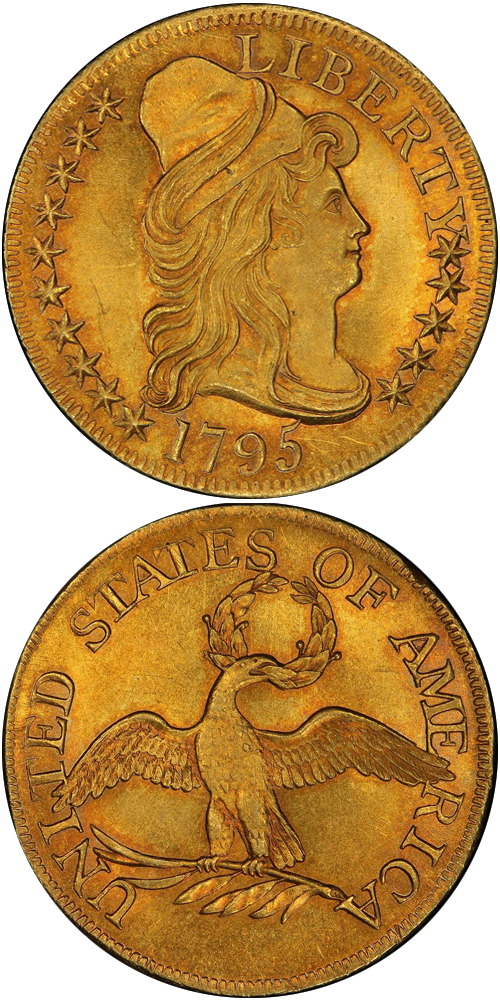1795 Capped Bust Right Half Eagle
United States gold coinage was first called for in Thomas Jefferson's Notes on Coinage, written in the spring of 1784, but the necessity of a stable American currency based upon specie had been evident for decades. George Washington, then a retired general and Virginia planter, told Congressman William Grayson in August 1785 "Mr. Jefferson’s ideas upon this subject are plain and simple ... Without a Coinage, ... a Man must travel with a pair of money scales in his pocket, or run the risk of receiving gold at one fourth more by count than weight." While working class citizens of the infant United States may have rarely encountered gold coins, the merchant and planter classes depended upon them. These were the men who enshrined in Article I, Section 10 of the United States Constitution that no state may "make anything but gold and silver coin a tender in payment of debts."
Whereas Jefferson's plan defined just one gold coin, the ten dollar piece called an "eagle," it was the Resolution of Congress of August 8, 1786, which first established "that there shall be two gold coins ... one containing one hundred and twenty-three grains, and one hundred and thirty-four thousands of a grain of fine gold, equal to five dollars, to be stamped in like manner, and to be called a Half-Eagle." By the time the Mint Act of April 2, 1792 was codified, the weight of the half eagle had increased slightly (to 135 grains of "standard" or alloyed gold), and a quarter eagle valued at $2.50 had also been conceived and defined. Still, United States gold coinage remained nothing but a concept. It was the very end of 1792 before the Mint was finally more than words on paper, having evolved into brick and mortar buildings in Philadelphia, full of noisy machinery and hard-working people. Nearly two years after that, regular production of precious metal coinage was begun. Dollars and half dollars of 1794 were the first silver coins struck since the initial "small beginning," 1792 half dismes. And yet, by the end of 1794, fully two years after the Philadelphia Mint was a full-scale operation, gold remained in the future.
Robert Scot accomplished the first half eagle master dies in the spring of 1795. The first 744 half eagles struck in the United States Mint were delivered to the Treasurer of the Mint by the coiner on July 31, 1795. By the final delivery of half eagles that year, handed over on September 16, a total of 8,707 examples of the first issue of five-dollar gold pieces had been coined. Judging by the review of the design published six weeks later in Philadelphia's Independent Gazette, they were a hit.
As further evidence of their popularity, a substantial number of 1795 half eagles were saved at the time. However, as John Dannreuther points out, "the high estimates of the known survivors of the 12 Small Eagle varieties [of 1795] added together are only slightly more than 600 specimens." A healthy percentage of those have seen use as jewelry (including, according to family legend, the very first one struck, retained by Mint Director Henry DeSaussure but turned into a ring by a granddaughter). Very few have survived in Choice Mint State, making auction offerings of pieces of this quality marquee events.
The example to the left was sold by Stack's Bowers Galleries in the D. Brent Pogue Part II Auction, where it realized $646,250.
1795 Capped Bust Half Eagle Auction Highlights
 PCGS MS-65 Sold for $646,250 View Lot 2069 |  PCGS MS-63+ Sold for $211,500 View Lot 2070 |  PCGS MS-62 Sold for $132,000 View Lot 10325 |






